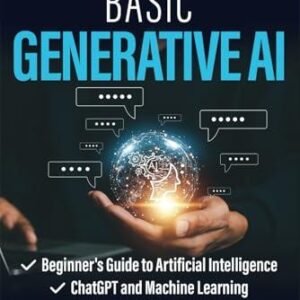In an era where technology permeates every aspect of our lives, the educational landscape is undergoing a profound transformation, driven largely by the rise of artificial intelligence (AI). From personalized learning experiences to intelligent tutoring systems, AI is reshaping how educators teach and how students learn, making education more accessible and tailored than ever before. As we stand on the brink of this technological revolution, it’s essential to explore how AI is not only enhancing traditional educational methods but also opening up new avenues for innovation in educational technology. In this article, we’ll delve into the remarkable ways AI is revolutionizing learning environments, the potential benefits it offers to both learners and educators, and the challenges that accompany this rapid integration. Join us as we navigate the future of education, where AI is not just a tool but a transformative force in shaping the minds of the next generation.
Table of Contents
- Understanding the Role of AI in Personalizing Learning Experiences
- Enhancing Student Engagement Through Intelligent Tutoring Systems
- Integrating AI Tools in Curriculum Design for Improved Outcomes
- Navigating Ethical Considerations and Future Trends in AI Education
- To Conclude
Understanding the Role of AI in Personalizing Learning Experiences
Artificial Intelligence is revolutionizing the educational landscape by tailoring learning experiences to the unique needs of each student. By harnessing vast amounts of data, AI algorithms can analyze individual learning patterns, preferences, and performance metrics. As a result, educators gain a powerful tool that allows them to create highly personalized curricula that adapt in real-time. This adjustment not only promotes engagement but also fosters a deeper understanding of subject matter, paving the way for improved academic outcomes. Schools and institutions are beginning to see the benefits of implementing such technologies, leading to more interactive and effective learning environments.
The integration of AI in education also extends beyond mere content delivery. It encompasses a broad range of functionalities, from intelligent tutoring systems that provide immediate feedback to predictive analytics that forecast student performance. Here are a few key aspects of AI’s contribution:
- Adaptive Learning: Customizes lessons based on students’ strengths and weaknesses.
- Data-Driven Insights: Offers actionable information to educators for better instruction.
- Engagement Tools: Utilizes gamification and interactive resources to enhance motivation.
- Accessibility Features: Tailors materials to support diverse learning needs.
To illustrate the impact of AI, consider the following table showcasing the benefits of personalized learning through AI:
| Benefit | Description |
|---|---|
| Increased Retention | Students retain information better when lessons are tailored to their learning styles. |
| Enhanced Motivation | Personalized content keeps students engaged and invested in their learning journey. |
| Time Efficiency | Students progress at their own pace, allowing for a more efficient learning process. |
| Improved Outcomes | Targeted support leads to better academic performance and confidence. |
Enhancing Student Engagement Through Intelligent Tutoring Systems
Intelligent Tutoring Systems (ITS) have emerged as a powerful tool in the educational landscape, providing personalized learning experiences that cater to individual student needs. These sophisticated systems utilize advanced algorithms and artificial intelligence to assess a learner’s strengths and weaknesses, adapting content and instructional strategies in real-time. Here are some key benefits of incorporating ITS in education:
- Personalized Learning Paths: Tailored content that aligns with each student’s unique learning style and pace.
- Immediate Feedback: Instant assessments that help students understand concepts better and correct mistakes.
- Increased Motivation: Gamification elements and personalized challenges that enhance student engagement.
Moreover, the data collected through ITS can provide educators with invaluable insights into student performance and engagement levels, allowing for more informed decision-making. By analyzing patterns in learning behaviour, teachers can identify at-risk students and intervene sooner. Here’s a brief comparison of traditional versus intelligent tutoring approaches:
| Feature | Traditional Tutoring | Intelligent Tutoring Systems |
|---|---|---|
| Personalization | Limited | High |
| Feedback Timing | Delayed | Immediate |
| Data Utilization | Minimal | Extensive |
As educational institutions continue to embrace technology, the potential for ITS to transform learning environments becomes increasingly evident. By enhancing student engagement through personalized experiences, ITS not only improves academic performance but also fosters a love for learning that can last a lifetime.
Integrating AI Tools in Curriculum Design for Improved Outcomes
Incorporating AI tools into the curriculum design process allows educators to create more adaptive and personalized learning experiences. By leveraging machine learning algorithms and data analytics, teachers can assess individual student needs and tailor educational content accordingly. This approach not only enhances engagement but also fosters deeper understanding. Educators can deploy tools such as intelligent tutoring systems that provide real-time feedback and support, enabling students to progress at their own pace and reinforcing their learning journeys.
Furthermore, AI can streamline administrative processes within educational institutions, allowing educators to focus on what truly matters: teaching. By utilizing AI for grading, curriculum mapping, and student performance analytics, educators can spend less time on routine tasks and more on strategic planning and interaction with their students. The integration of AI-driven platforms can also facilitate collaborative learning environments, where students can leverage shared resources and gain insights from peer interactions, ultimately leading to a more enriched educational experience.
Navigating Ethical Considerations and Future Trends in AI Education
The integration of artificial intelligence in education raises numerous ethical dilemmas that educators, developers, and policymakers must navigate carefully. As we embrace AI’s potential to personalize and enhance learning experiences, we must also consider the implications of data privacy, algorithmic bias, and the role of human oversight. Transparency in AI systems is essential to ensure that both educators and students can trust the technology they interact with. Key ethical considerations include:
- Data Privacy: The collection and storage of student data must adhere to strict privacy regulations to protect sensitive information.
- Bias Mitigation: Algorithms must be constantly evaluated and improved to minimize bias that can impact learning outcomes for marginalized students.
- Human Oversight: Educators should retain control over AI systems, ensuring that technology serves as an aid rather than a replacement.
Looking ahead, several trends are expected to shape the future of AI in education. Ongoing advancements in machine learning and natural language processing will produce increasingly sophisticated tools that cater to diverse learning styles and needs. The rise of adaptive learning technologies will allow curricula to evolve in real time, providing personalized pathways for students. Key emerging trends include:
| Trend | Description |
|---|---|
| AI-Driven Tutoring Systems | Intelligent systems that offer immediate feedback and personalized support to learners. |
| Virtual and Augmented Reality | Immersive technologies that create engaging, experiential learning environments. |
| Predictive Analytics | Tools that analyze student data to forecast trends and intervene early for at-risk learners. |
To Conclude
the rise of artificial intelligence in educational technology marks a transformative era that holds immense potential for both educators and learners alike. As we navigate this complex landscape, it is essential to embrace the innovations that AI brings, while also remaining critical of its implications. From personalized learning experiences to streamlined administrative processes, AI is redefining what it means to teach and learn.
As educators, students, and policymakers, our challenge moving forward will be to leverage these advancements responsibly and ethically, ensuring that technology complements rather than replaces the human touch that is essential in education. With a thoughtful approach to integrating AI, we can create an inclusive, engaging, and impactful learning environment that prepares our students not just for academic success, but for a rapidly evolving world.
Let us continue to engage in meaningful discussions about the role of AI in education and remain open to exploring its evolving capabilities. The future is bright, and with the right tools and mindset, we have the power to transform learning for generations to come. Thank you for joining us in this exploration of AI in educational technology, and we invite you to share your thoughts and experiences as we collectively shape the future of education.





